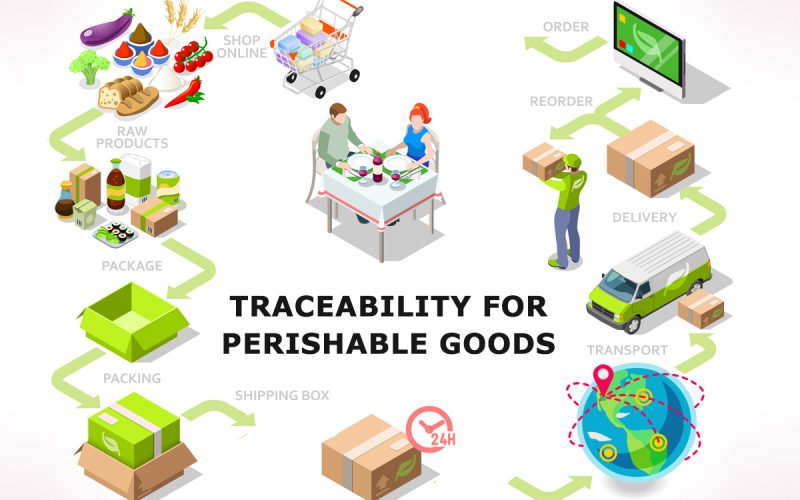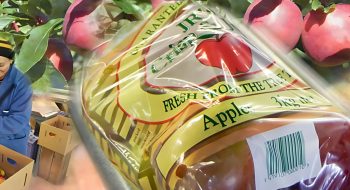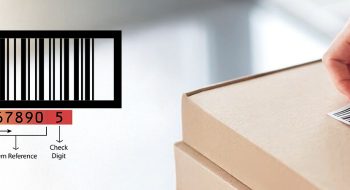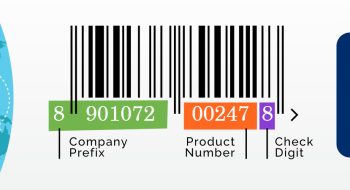Food traceability is the capability of tracking and tracing the movement of food products and their raw materials throughout their entire journey in the supply chain. It includes step-by-step documentation of the complete product detail under different stages, such as procurement, production, processing, and distribution. Food traceability in the supply chain promotes the visibility of manufactured products and guarantees authentication of the ingredients being used.
What Are Food Traceability Systems?
Business owners or manufacturers of food products can route the journey of their entire product lots in a single system called a food traceability system. These systems provide information on a real-time basis leveraging technologies such as barcodes, Radio Frequency Identification, or Blockchain. Through this system, manufacturers can detect and trace back the manufacturing unit and ingredients of the product, map the whole production journey and ensure food product quality.
If you are a business owner and want to list your products in your food traceability system it is recommended to get barcodes for your food products. GS1 India is the only authority to allocate standardised, structured, interoperable and unique barcodes in India.
Why Are Food Traceability Systems Important?
Food traceability systems play a vital role in automating food product management in the supply chain. Below are some key reasons why organisations must adopt traceability systems –
1. Traceability Food Safety
Safety of products is pre-eminent especially when we talk about food articles. When dealing with the production of consumables or procurement of raw materials safety and security is something that cannot be overlooked in any situation. The record-keeping of the food products ensures compliance and that consumers get products of the highest quality.
The traceability system helps in the easy identification and redressal of any health and safety hazards. Products found contaminated can be recalled as soon as possible once data is read by the product manufacturer using the system.
2. Real-time food traceability
Traceability systems record the whole journey of the food products on a real-time basis. The scanning of barcodes on food items facilitates mapping the complete product journey. Wherever the barcodes will be scanned, the details will automatically be received in the product traceability system and be reflected in real-time to manufacturers or sellers. This empowers businesses to ensure that food products are not subjected to any adulteration in their journey to end consumers.
3. Reducing Corrective Actions
Recalling food products from the market is not a new concept. Though it is a corrective action it is not the best course of action. Problems must be identified and resolved before they reach a stage where products have to be recalled. Recalling not only reduces customer trust and loyalty but also is very costly to any company. A good traceability system integrated with barcode technology helps in avoiding such circumstances.
4. Being Compliant with Regulations
Food traceability helps companies comply with the local and international regulations and safety standards of selling food products in the market. As a result of this, your company will enjoy brand goodwill and increased consumer satisfaction.
What to Look for When Looking into Food Traceability
1. Proper Documentation
When opting for a product traceability system it is important to provide all your necessary documents such as a raw material list, contact details, complete product information, and batch identification.
2. Efficient Finished Goods and Raw Material Management
Your product management system must be easy to use and should be efficient. This will allow businesses to track the movement of food products easily without any disruptions.
3. Improve Response Times
A food traceability system will automatically improve your response times. When you are notified about the product journey on a real-time basis you will be able to identify gaps quicker than before and take corrective actions.
4. Transparency and Honesty
As a business owner, it is your responsibility at the end to take action when necessary. A food traceability system can only register data at various levels of the supply chain, you will have to be vigilant in identifying any discrepancies and notifying the concerned people and authorities.
Conclusion
Businesses must invest in implementing robust traceability systems to ensure the safety of their products at each stage. The scope and objectives behind traceability for each category of product must be very well defined and the system must be integrated with an advanced technology like barcode or RFD.
Companies should also train their employees to use the traceability system so that every employee can track food products, promoting the identification of the root causes at the earliest.
Frequently Asked Questions
1. Are there international standards for food traceability?
Yes, there are several international standards to govern food traceability such as – EU Regulations – Regulation (EC) No. 178/2002, requires traceability for food and feed. In the CAC/GL 60-2006 standard, traceability is defined as a necessary tool for inspection.
GS1 Global Traceability Standards can also be analysed to understand and implement traceability by integrating barcode technology.
2. What challenges are associated with implementing food traceability?
Organisations face challenges in ensuring regulatory compliance, achieving interoperability, manual data entry, and unique product identification while implementing food traceability systems.
3. How does food traceability impact food supply chains?
Food traceability directly impacts the food supply chain by providing real-time information to the manufacturers. When details are registered and actions are taken promptly it results in an efficient, transparent and smooth supply chain.
4. What role do governments play in food traceability?
Governments play a critical role in food traceability. They are the sole authorities of introducing and developing standards governing food traceability.
5. Can food traceability prevent food fraud?
Yes, food traceability can indeed prevent food fraud. When the entire journey of the food products is documented and audited on a real-time basis, adulteration or food forgery can be identified and corrective actions can be taken.
6. How does food traceability contribute to sustainability?
Tracking food inventories at retail points helps analyse the stock effectively. It proves instrumental in maintaining efficient inventory levels and preventing situations such as stockouts or overstocking, thus contributing to sustainability.
7. Are small-scale producers required to adhere to food traceability standards?
No matter the scale, every manufacturer or food producer should adhere to food traceability standards to prevent any problems in the future.









